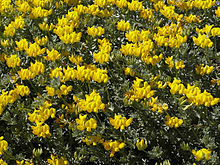캄필로박테로타
Campylobacterota| 캄필로박테로타 | |
|---|---|
 | |
| 캄필로박터 | |
| 과학적 분류 | |
| 도메인: | 박테리아 |
| 문: | 캄필로박테로타 Waite 등 2021년[1] |
| 반 | |
| 동의어 | |
| |
캄필로박테로타는 박테리아 [3]문이다.이 문종의 모든 종은 그램 음성이다.
캄필로박테로타는 거의 알려지지 않은 속들, 주로 곡면부터 나선형 월리넬라, 헬리코박테로박테, 캄필로박테로 구성되어 있다.알려진 종의 대부분은 동물의 소화관에 서식하며 공생동물 역할을 한다.또는 병원균(Helicobacter spp.위에는 캄필로박터 spp.십이지장)에 있습니다.많은 캄필로박테로타균들은 [4]편모를 가지고 있다.
캄필로박테로타의 수많은 환경적 배열과 분리 또한 열수 분출구와 차가운 침투 서식지에서 회복되었다.분리주의 예로는 유황모나스 오토트로피카,[5] 유황모나스 패럴비넬라,[6] 석영양소[7], 노틸리아 프로푼디콜라 [8]등이 있다.캄필로박테로타 문(Campylobacterota)의 구성원은 심수성 골뱅이 알비니콘차 헤슬레리의 [9]큰 아가미에 내분비온트로 나타난다.
심해 열수 분출구에서 발견되는 캄필로박테로타균은 화학석영양증을 나타내며 질산염이나 [10]산소의 감소와 결합된 환원된 황, 포름산염 또는 수소를 산화시킴으로써 에너지 수요를 충족시킨다.자가영양 캄필로박테로타는 원래 환경적으로 별로 중요하지 않다고 생각되었던 경로인 바이오매스에 이산화탄소를 고정하기 위해 역 크렙스 회로를 사용합니다.이 경로의 산소 민감도는 이러한 환경에서 미세 호기성 또는 혐기성 틈새와 일치하며, 중생대 [11]해양에서의 가능한 진화는 시아노박테리아 광합성을 [12]통해 이용 가능한 낮은 수준의 산소로 황산염이었다.
계통발생학
현재 인정된 분류법은 LPSN(Standing in Nomenclature)과 NCI(National Center for Biotechnology Information)에 기초한 원핵생물명목록(List in Nomenclature)과 NCI([14]National Center for Biotechnology Information)에 기초한 것이며, 계통발생학은 '모든 종족 생물의 생목 프로젝트'에[15] 의한 16S RNA 기반 LTP 릴리스 106에 기초한 것이다.
| 캄필로박테로타 |
| |||||||||||||||||||||||||||||||||||||||||||||||||||||||||||||||||||||||||||||||||||||||
주의:
- 순수(비축적) 문화가 격리되거나 이용 가능하지 않은 원핵생물, 즉 배양되지 않거나 몇 개 이상의 연속 경로 동안 배양에서 지속할 수 없는 원핵생물
레퍼런스
- ^ Oren A, Garrity GM (2021). "Valid publication of the names of forty-two phyla of prokaryotes". Int J Syst Evol Microbiol. 71 (10): 5056. doi:10.1099/ijsem.0.005056. PMID 34694987. S2CID 239887308.
- ^ Garrity GM, Bell JA, Lilburn T (2005). "Class V. Epsilonproteobacteria class. nov.". In Brenner DJ, Krieg NR, Staley JT, Garrity GM (eds.). Bergey's Manual of Systematic Bacteriology. Vol. 2: The Proteobacteria Part C (The Alpha-, Beta-, Delta- and Epsilonproteobacteria (2nd ed.). Springer. p. 1145. doi:10.1002/9781118960608.cbm00044. ISBN 9781118960608.
- ^ "www.ncbi.nlm.nih.gov". Retrieved 2009-03-19.
- ^ Beeby, M (December 2015). "Motility in the epsilon-proteobacteria". Current Opinion in Microbiology. 28: 115–21. doi:10.1016/j.mib.2015.09.005. hdl:10044/1/27763. PMID 26590774.
- ^ Inagaki, F. (2003-11-01). "Sulfurimonas autotrophica gen. nov., sp. nov., a novel sulfur-oxidizing -proteobacterium isolated from hydrothermal sediments in the Mid-Okinawa Trough". International Journal of Systematic and Evolutionary Microbiology. 53 (6): 1801–1805. doi:10.1099/ijs.0.02682-0. ISSN 1466-5026. PMID 14657107.
- ^ Takai, K. (2006-08-01). "Sulfurimonas paralvinellae sp. nov., a novel mesophilic, hydrogen- and sulfur-oxidizing chemolithoautotroph within the Epsilonproteobacteria isolated from a deep-sea hydrothermal vent polychaete nest, reclassification of Thiomicrospira denitrificans as Sulfurimonas denitrificans comb. nov. and emended description of the genus Sulfurimonas". International Journal of Systematic and Evolutionary Microbiology. 56 (8): 1725–1733. doi:10.1099/ijs.0.64255-0. ISSN 1466-5026. PMID 16901999.
- ^ Inagaki, Fumio; Ken Takai; Kenneth H. Nealson; Koki Horikoshi (2004-09-01). "Sulfurovum lithotrophicum gen. nov., sp. nov., a novel sulfur-oxidizing chemolithoautotroph within the ε-Proteobacteria isolated from Okinawa Trough hydrothermal sediments". International Journal of Systematic and Evolutionary Microbiology. 54 (5): 1477–1482. doi:10.1099/ijs.0.03042-0. ISSN 1466-5026. PMID 15388698.
- ^ Julie L. Smith; Barbara J. Campbell; Thomas E. Hanson; Chuanlun L. Zhang; S. Craig Cary (2008). "Nautilia profundicola sp. nov., a thermophilic, sulfur-reducing epsilonproteobacterium from deep-sea hydrothermal vents". International Journal of Systematic and Evolutionary Microbiology. 58 (7): 1598–1602. doi:10.1099/ijs.0.65435-0. PMID 18599701.
- ^ Suzuki, Yohey; Sasaki, Takenori; Suzuki, Masae; Nogi, Yuichi; Miwa, Tetsuya; Takai, Ken; Nealson, Kenneth H.; Horikoshi, Koki (2005). "Novel Chemoautotrophic Endosymbiosis between a Member of the Epsilonproteobacteria and the Hydrothermal-Vent Gastropod Alviniconcha aff. hessleri (Gastropoda: Provannidae) from the Indian Ocean". Applied and Environmental Microbiology. 71 (9): 5440–5450. Bibcode:2005ApEnM..71.5440S. doi:10.1128/AEM.71.9.5440-5450.2005. PMC 1214688. PMID 16151136.
- ^ Takai, Ken; et al. (2005). "Enzymatic and genetic characterization of carbon and energy metabolisms by deep-sea hydrothermal chemolithoautotrophic isolates of Epsilonproteobacteria". Applied and Environmental Microbiology. 71 (11): 7310–7320. Bibcode:2005ApEnM..71.7310T. doi:10.1128/aem.71.11.7310-7320.2005. PMC 1287660. PMID 16269773.
- ^ Campbell, Barbara J.; Engel, Annette Summers; Porter, Megan L.; Takai, Ken (2006-05-02). "The versatile ε-proteobacteria: key players in sulphidic habitats". Nature Reviews Microbiology. 4 (6): 458–468. doi:10.1038/nrmicro1414. ISSN 1740-1526. PMID 16652138. S2CID 10479314.
- ^ Anbar, A. D.; A. H. Knoll (2002-08-16). "Proterozoic Ocean Chemistry and Evolution: A Bioinorganic Bridge?". Science. 297 (5584): 1137–1142. Bibcode:2002Sci...297.1137A. CiteSeerX 10.1.1.615.3041. doi:10.1126/science.1069651. PMID 12183619. S2CID 5578019.
- ^ J.P. Euzéby. "Epsilonproteobacteria". List of Prokaryotic names with Standing in Nomenclature (LPSN). Archived from the original on 2011-10-07. Retrieved 2011-11-17.
- ^ Sayers; et al. "Epsilonproteobacteria". National Center for Biotechnology Information (NCBI) taxonomy database. Retrieved 2011-06-05.
- ^ '모든 종류의 살아있는 나무' 프로젝트."16S rRNA-based LTP release 106 (full tree)" (PDF). Silva Comprehensive Ribosomal RNA Database. Archived from the original (PDF) on 2012-05-07. Retrieved 2011-11-17.


